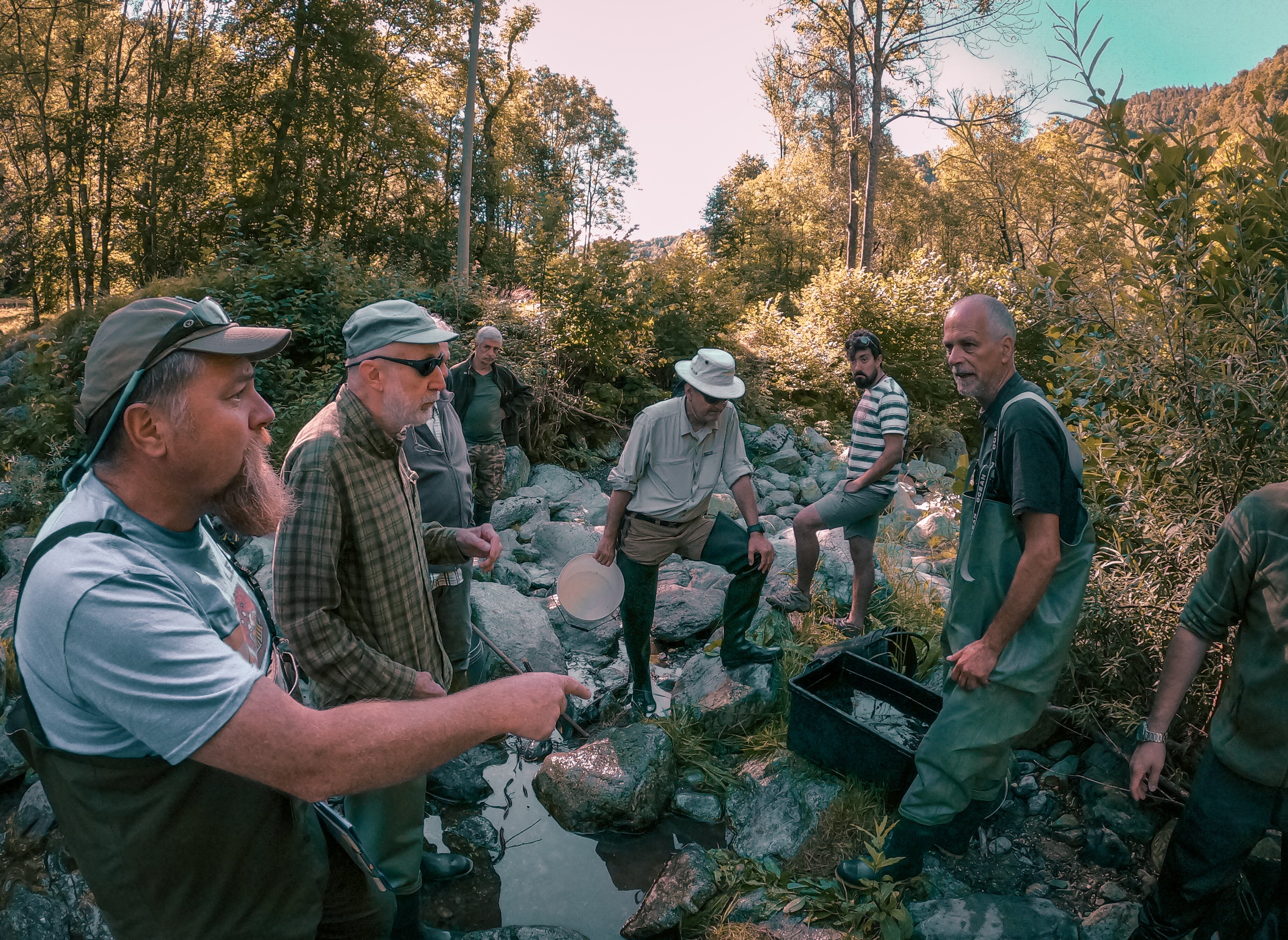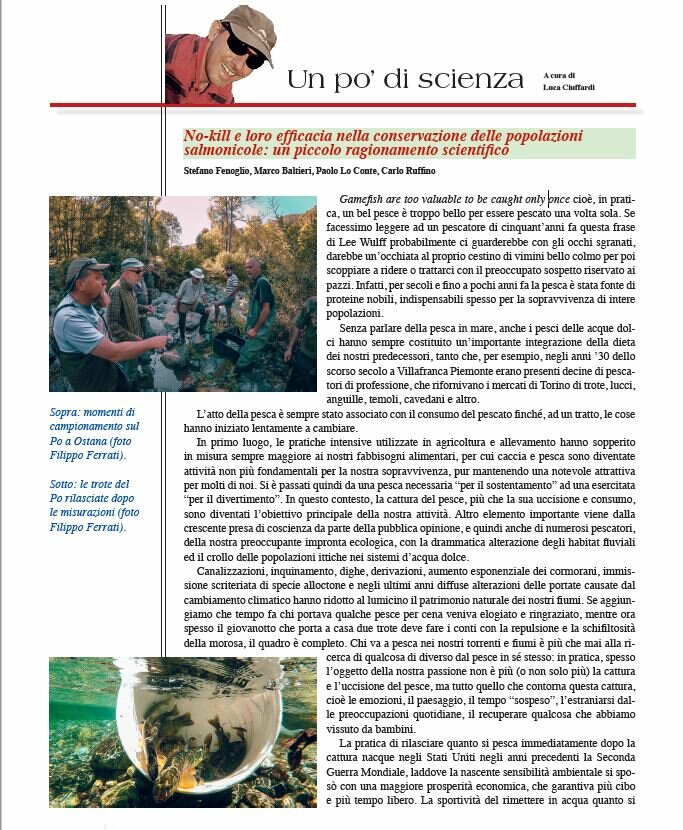
Conservation Effectiveness of No-Kill Management for the Protection of River Fish Populations
Canalizations, pollution, dams, water diversions, the exponential increase of cormorant populations, reckless introduction of alien species, and, in recent years, widespread alterations in water flow due to climate change have severely reduced the natural heritage of our rivers.
In this context, what is the conservation effectiveness of introducing a no-kill management approach for the protection of fish populations in a specific river stretch?
In 2019, the ALPSTREAM group contributed to the establishment of a no-kill stretch on the Po River, spanning approximately 3 km, in collaboration with the Province of Cuneo, ATAAI, and the Monviso Park.
The area was equipped with informational panels highlighting various aspects of the stream's ecology and biodiversity. At the beginning of August 2018, before the establishment of the no-kill zone, a quantitative trout sampling was conducted to assess the initial population density and structure.

After two years, a second survey was performed. The study revealed some interesting results: in just two years, there was a huge increase in the trout population (+27%!) with a significant rise in the number of young individuals. These data confirm that no-kill management can be extremely effective for the conservation and growth of salmonid populations. The expansion of such stretches in our valleys would be a key element not only for the conservation and protection of salmonid populations but also for more satisfying fishing activities: each no-kill stretch essentially functions as a source area from which trout can spread and colonize upstream and downstream sections. Moreover, the creation of these stretches dedicated to fly fishing represents an important element in promoting sustainable tourism in the region, combining conservation and sports activities.

